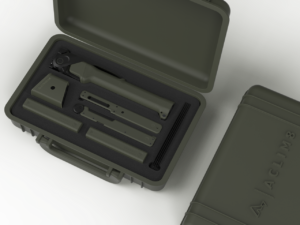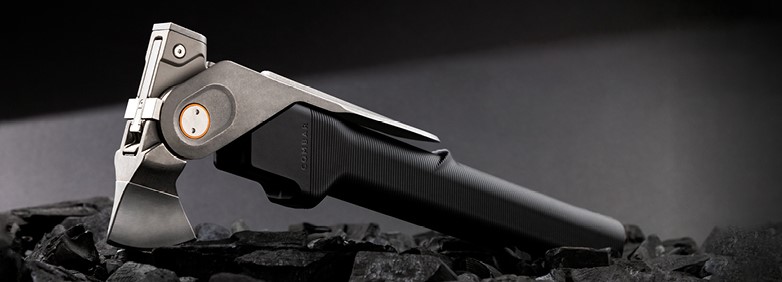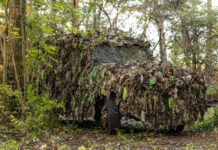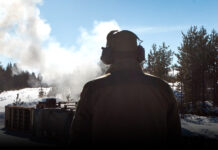Yes, you read that correctly; there is a new multi-tool on the military market, ideally suited for special operations forces – but, also for any soldier being deployed in rough, uncertain terrain. COMBAR, from Israeli start-up ACLIM8 – was several years in the design and making of a simple, sleek, field tool, that seems transcendental when compared to the old axes, trench shovels and survival tools previously issued to the ground forces of previous generations. COMBAR was designed by former special operations commandos for today’s elite warfighters.
Mittler Report had the exclusive chance to interview Udi Cohen, CEO of ACLIM8 about this remarkable product, learn more about COMBAR and challenge him on why it is very relevant for armed and policing forces (such as border patrols and special tactical units).

Mittler Report Verlag: COMBAR’s design is amazing – is it too “pretty” for the armed forces?
Udi Cohen: Indeed, the answer is really found in our design philosophy and our product values. The design takes into consideration nine core aspects:
- Integrated functionality
- portability / weight burden
- materials used
- rapid activation of the product
- safety of the COMBAR for the user
- a long-term guarantee
- meet military specifications and end-user needs
- optimisation of the tool – “does it do what it’s supposed to do?”
- the overall “look & feel” of the product – that is, “how does feel in the hands?”
If we look at COMBAR’s characteristics or product values, then we see the following seven aspects as being paramount to establish COMBAR as a successful military field tool: durable, empowering, compact, safe, collaborative, desirable, and – if I may? – “iconic”. While form follows function, form should also make a statement, giving the buyer or end-user added confidence when holding it.

MRV: The handle is rather wide, made of stiff material and hollow; meaning shock absorption will be very low when it is used as an axe.
Cohen: Your point is taken and it is something we also considered. However, there are three points to consider:
- the shaft is intentionally designed for only short non-continuous work. The user is only employing the axe to remove some smaller obstacles or cut just enough branches for simple constructs, not a log cabin to winter inside.
- when undergoing trials to meet military durability standards (such as during drop, endurance and environmental tests), the priority is using the best materials to get the best results and longest warranty.
- professional-military end-users from the USA and Israel who tried it in deployment did not provide any negative ergonomic feedback.
MRV: Resilience of the materials; joints/bolts/springs; moving parts – how well will the carefully aligned parts continue to stay aligned after being bashed about during a deployment?
Cohen: We know that COMBAR’s years of R&D – which includes much trial and error – is rooted in a deeply challenging process. During COMBAR’s development and trials, the process proved to be trustworthy. We aimed high with our goals for COMBAR’s purpose and functionality. We re-designed, re-developed and retested COMBAR’s earlier incarnations over and over again. This process led to changing materials, tensile strength and tolerance until we achieved the best system.
MRV: Is the axe head too small to be effective – how often will it need to be used?
Cohen: We chose this size to cover the majority of the cases a user will need it for basic tasks and survival during deployment. It’s the only folding axe product that exists and part of a multi-tool system. There is also a matter of a trade-off between weight, volume and portability that needs considering….

MRV: Is the spade too narrow to be useful – will it be used more than the axe? (trade-off shapes; placement and space).
Cohen: Again, we chose this size to cover the majority of the use cases needed for survival during a deployment. It is highly unlikely that it will be needed to remove large pieces of stone or rubble during an emergency. It is more suited for digging fox holes and planting anti-tank explosives.
MRV: Is the material used in creating the multi-tool too reflective or bears some sort of a sensor / IR camera signature?
Cohen: COMBAR ’s “stonewash” finish significantly reduces any possible light reflection. We also can provide black coated COMBAR upon request. Any sensor signature – infra-red cameras – is negligible if anything at all.

MRV: Thank you and best wishes for much success.
Curtis Hand







